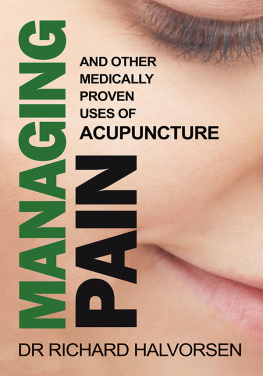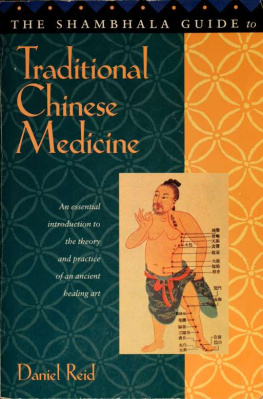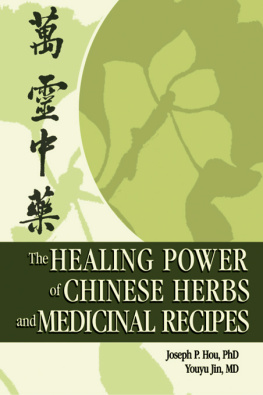Copyright 2019 by Dr. Chau-Shin Hsu and Dr. Joseph Y. Lin
All rights reserved. No part of this publication may be reproduced, distributed, or transmitted in any form or by any means, including photocopying, recording, or other electronic or mechanical methods, without the prior written permission of the publisher, except in the case of brief quotations embodied in critical reviews and certain other noncommercial uses permitted by copyright law. For permission requests, write to the publisher, addressed Attention: Permissions Coordinator, at the address below.
Published By:
OHAI (Oriental Healing Arts Institute)
Irvine, CA
Disclaimer: This book is meant to supplement, not replace, proper medical advice of physicians. The reader should regularly consult a physician in matters relating to his/her health and particularly with respect to any symptoms that may require diagnosis or medical attention.
Printed in the United States of America
ISBN Paperback: 978-0-941942-51-5
ISBN eBook: 978-1-947341-48-7
Library of Congress Control Number: 2018968287
Editorial work & design: Redwood Publishing, LLC
Book illustrations: drawn (and owned) by Mr. Henry Jorgensen
ACKNOWLEDGMENTS
A book of this sort is largely a collection of existing traditional knowledge. Therefore, it is impossible to acknowledge all to whom we are indebted. But we would like to thank our Lord and our parents, for giving us the opportunity to serve others.
I (JYL) would like to thank Dr. Melissa See, Director of OHAI. Mr. John Guszak is the Director of Research and Education Program of OHAI; Dr. Wu-Chang Chuang, President of SUN TEN Pharmaceutical CO., LTD. and Dr. Ming-Chung Lee, Deputy Director of Brion Research Institute of Taiwan, for providing me the very valuable information on recent advances in herbal researches; Dr. James T. Russell, Head, Section on Cell Biology and Signal Transduction and the Director of Microscopy and Imaging Core at National Institute of Child Health and Human Development (NICHD) of National Institutes of Health, for allowing me to use his laboratory; Dr. Susan Wray, Chief, Cellular and Developmental Neurobiology Section, at National Institute of Neurological Disorder and Stroke (NINDS) of National Institutes of Health, for letting me participate in her very fascinating research projects; a big thank you to my wonderful cartoonist, Mr. Henry Jorgensen, for his fun drawings throughout the book; Mrs. Sara Stratton and Ms. Stephanie Umeda, for their editing and cover design of this book. I would like to thank my entire staff at Physical Medicine and Treatment Center in Gaithersburg, Maryland, for keeping my office operational during my absence, and my family, for their patience during the preparation of this book. I would especially like to thank all of my patients who taught me what I need to know about them and let me know what they wanted from me.
Chau-Shin Hsu, Ph.D.
Joseph Y. Lin, M.D., Ph.D.
Irvine, California
Contents
Introduction
P ain is the oldest complaint of the human race.
Pain can be a brief sensation of discomfort or a chronic illness that does not go away, no matter what actions are taken. It can lead to anxiety, depression, fear, broken relationships, drug dependency, financial hardship, isolation, poor physical conditioning, and sometimes, even death. A persistent or chronic pain can make a person feel helpless; it is a very difficult and lonely journey that seems to never end.
Despite the medical progress made over the years, pain is still one of our greatest mysteries and is the most misunderstood phenomenon in medicine.
The conventional pain management prescribes its patients to take drugs, attend physical therapy, relax, and finally, learn to live with the pain. The Traditional Chinese Medicine (TCM) practice makes similar prescriptions, but also encompasses herbs, needling, heat, therapeutic massage, and exercise. The fundamental differences between TCM and conventional modern medicine lie in the way of thinking and the method of treatment.
Modern medicine often focuses only on the malfunctioning part(s), and views the human body as a machine. It relies heavily on laboratory tests to make a diagnosis. A person with flesh and blood may be treated, (often unintentionally), as a lifeless robot. TCM approaches pain from various external and internal stimuli taking into consideration the effect the pain may have on the flow of Qi, Blood, and the Yin/Yang condition of the body. It concentrates on the movement of vital energy throughout the whole body, treating the body as a whole, and not simply just the area with painful sensation. The goal of TCM treatment is to maintain homeostasis of the whole body.
TCM was used for thousands of years, almost exclusively, to treat all forms of illnesses throughout the Far East until the Opium War (from 1839 to 1842) when it was slowly replaced by modern medicine. Modern science and progress spread rapidly during the eighteen and nineteenth centuries. Advances in diagnostic testing, such as computer assisted equipments and other high tech medical hard wares, have brought medicine into a space age technology. Many new fields in science either originated or matured in the past 100 years. The results also marked the formal division between the modern Western medicine and the ancient TCM.
However, over the past fifty years, the interest in natural health care has been dramatically increasing, as people seek to receive more holistic and natural healthcares. Millions of people use acupuncture as part of their health care regime, and there is more pharmacological research and clinical studies done regarding herbs and herbal formulas. As a result, patients now realize that many chronic illnesses can be helped with the use of natural herbs and herbal formulas. For example, in TCM, a woman who suffers from low back pain due to endometriosis is thought to have stagnation of blood circulation. It may be treated by Gentiana Combination (Lung-tan-hsieh-kan-tang), Cinnamon and Hoelen Formula (Kuei-chih-fu-ling-wan) and several other herbal formulas which dont give her the side effects she would get from taking Progestrogens, Danazol, and Gonadotropin Releasing Hormones Antagonists (abdominal swelling, tenderness in the breasts, increase in appetite, nausea, abnormal vaginal bleeding, depression, weight gain, abnormal liver function, hot flashes, dryness in the vagina and emotional disturbances). These medications are often used in conventional medicine, to suppress the ovarian function and stop the growth of the endometrial tissues. The main purpose for the formulation of an herbal formula is to enhance its clinical efficacy and to minimize its adverse effects. In clinical practice, an herbal formula is usually modified according to the patients age, symptoms, signs, and physical condition. In other words, the formula is tailored to the individual in order to achieve the best results.
As our book focuses mainly on low back pain, weve written this book with one goal in mindto help reduce painful sensation and to improve the pain sufferers overall functional capacity. The goal can be achieved by joining the best of the conventional scientific medicine with the old but new TCM practice. Such a synthesis would provide the patient with a more complete and satisfactory health care program.







